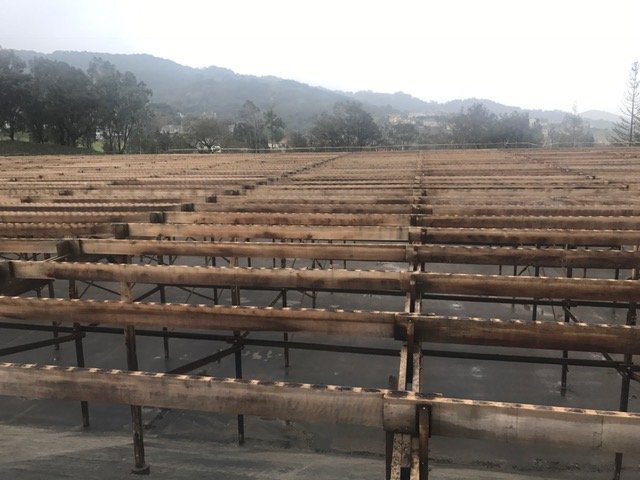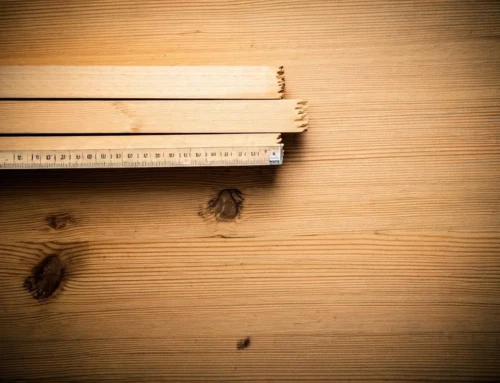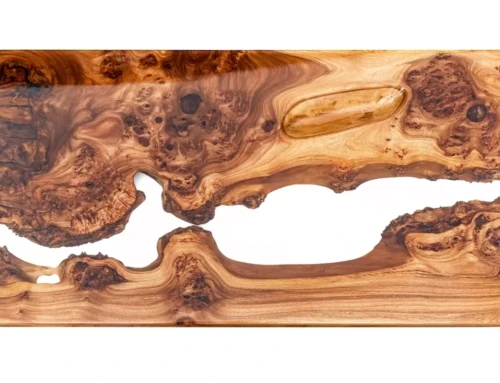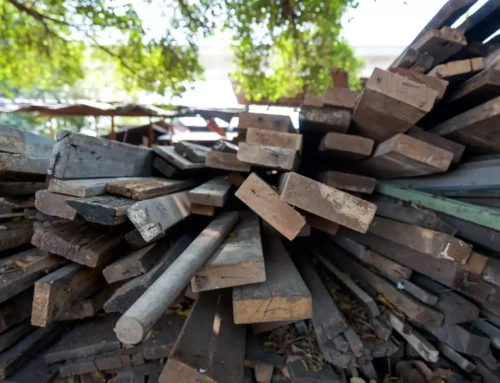Introduction to Reclaimed Lumber
Reclaimed lumber comes from a number of old structures including old buildings, barns, factories, bridges, and warehouses. It’s normally first growth lumber that has already lived one life and is ready for a second one. Not only does it have a rich history and unique character, but it also is a far superior product when compared to new lumber. Each batch of lumber we reclaim here at The Lumber Baron is visually inspected for quality before it is purchased. The vast majority of our lumber originally came from old-growth trees that are harder and more durable than what you might find in today’s market. Reclaimed lumber also boasts environmental benefits. By choosing reclaimed lumber, we reduce the demand to cut down new trees, allowing farmed lumber to grow longer, sequester more carbon and yield higher quality lumber once cut. This choice also decreases landfill waste since we’re repurposing material that might otherwise be discarded. So, when you pick reclaimed lumber for your next construction project, you’re not just making a design choice; you’re making a decision that benefits the planet all while purchasing superior lumber.

The Ecological Impact of Using New vs. Reclaimed Lumber
Choosing reclaimed lumber over new cuts directly supports our planet. Here’s the simple truth: using reclaimed lumber means less demand for new trees to be chopped down. This matters because cutting down fewer trees helps in reducing carbon in our atmosphere. When trees stay rooted, they continue to absorb carbon dioxide, a key player in climate change. Even though lumber in North America is sustainably harvested and has actually grown in size by 20% since the 1990’s, less demand for new lumber will allow these farmed trees to live longer and grow larger. Using reclaimed wood keeps more carbon locked away and actually results in higher yield, higher quality new lumber products.
Another point of concern is energy consumption. It takes far less energy to prepare reclaimed lumber compared to processing and transporting new wood, big savings in the carbon footprint. Imagine the difference between just cleaning up old wood versus the whole process of cutting, transporting, and milling new lumber. The energy saved here is huge, and less energy used means fewer carbon emissions.
Then there’s waste reduction. A lot of old wood comes from buildings that are no longer in use. By reusing this wood, we prevent it from ending up in landfills. This not only saves space in these landfills but also reduces the methane, a potent greenhouse gas, released when wood rots away in them.
In summary, choosing reclaimed lumber helps in fighting deforestation, saves energy, and reduces waste. It’s a smart pick for anyone looking to make eco-friendly construction choices.
How Reclaimed Lumber Reduces Waste
Using reclaimed lumber is a win-win. Here’s the deal: Every year, tons of construction and demolition debris fill up our landfills. A lot of this “junk” is old wood that’s still in good shape. By creating a profitable market for demolition contractors to carefully deconstruct the lumber from their projects, we’re digging into this pile of “waste” and putting it back to work. This means less new wood gets chopped down, less energy used to make new lumber, and a ton of incredible lumber with a prior history is saved. Think about it—less chopping, less processing, less transporting, more recycling, more history saved, better product. All these savings add up to a big win for the planet. So, when you pick reclaimed lumber, you’re not just getting a piece of wood. You get a superior product with a history all while making a statement that you care about the environment.
Energy Savings Associated with Reclaimed Lumber
Using reclaimed lumber for your construction projects is kind of a big win for our planet. Here’s the scoop: when you pick reclaimed lumber, you’re actually cutting down on the energy needed to produce new building materials. Think about it – harvesting fresh trees, processing them into usable wood, and then transporting them to your local hardware store eats up a lot of energy. But if we choose reclaimed lumber, we skip a lot of those steps, slashing the overall energy consumption. It’s a direct path to lower energy use and fewer emissions, making your construction project a lot more eco-friendly. Plus, reclaimed wood has a unique character and story that new wood just can’t match. So, by going with reclaimed, you save energy and give your project an edge in style and sustainability. Plus, this approach supports a recycling culture, turning old materials into something new and valuable again. It’s a win-win for the environment and for creative construction.
The Durability and Longevity of Reclaimed Lumber
Many might wonder if reclaimed lumber, with its history and age, stands the test of time when used in new constructions. The answer is a resounding yes. Reclaimed lumber proves not only to be durable but often surpasses the longevity of newer woods. This is because it comes from old-growth trees, which had centuries to grow and strengthen before being harvested. These trees provided wood with tighter growth rings, denser grain, and a naturally tough character that withstands wear and tear much better than most second or third growth lumber available today. Furthermore, the process of aging and exposure to the elements over time hardens the wood even more, especially in species like our reclaimed doug fir, enhancing its resilience. Builders and architects value reclaimed lumber for its unique character, history, and its proven track record of durability in structures that have stood for generations. So, choosing reclaimed lumber is not just about making an environmentally friendly choice but also about investing in materials that bring lasting strength and endurance to your construction projects.
Aesthetic and Historical Value of Reclaimed Lumber in Construction
Choosing reclaimed lumber for construction isn’t just about going green. It’s also about adding a piece of history and a unique aesthetic to your project. Every piece of reclaimed wood carries with it stories of its past, whether it was once part of an old factory, historic Pier or a legendary bridge. This adds an unmatched character and warmth to your space that new lumber just can’t replicate. Moreover, the natural aging process of wood gives reclaimed lumber a rich and varied patina that’s tough to find elsewhere. Incorporating this kind of wood into construction projects not only makes for a visually appealing result but also serves as a conversation starter, showcasing a commitment to preserving history and valuing the intrinsic beauty of aged materials. So, opting for reclaimed lumber means you’re not just building or renovating; you’re immortalizing history in your space.
Challenges and Considerations in Using Reclaimed Lumber
Choosing reclaimed lumber for construction sounds simple, right? Think again. It’s not just grabbing old wood and throwing it into a project. First off, finding the right quality can be a wild goose chase. You need wood that’s not rotten or infested with pests. This means you likely spend a good chunk of time hunting down suppliers or picking through piles of old wood. Then comes the cost. Sometimes, reclaimed lumber can hit your wallet harder than new wood because of its ‘vintage’ appeal. Plus, there’s the effort of making it work-ready—cleaning, removing old nails, and possibly milling.
Another head-scratcher is the lack of uniformity. Every piece of reclaimed lumber is a unique snowflake in terms of size, color, and texture. This can make your project look awesome with its character and history, but it can also make it a puzzle to fit everything together just right. And don’t forget about the building and structural codes. Not all reclaimed wood meets the strict codes needed for construction, so you’ve got to be sharp about what you pick. Lastly, think about the chemicals. Old wood might have been treated with stuff that’s now considered harmful, so you need to check that too, for safety’s sake.
So, yeah, using reclaimed lumber is great for the planet, but it’s not a walk in the park. Keep these challenges in mind, and you’ll need to weigh them against the environmental and quality wins.
Conclusion: The Future of Construction with Reclaimed Lumber
Reclaimed lumber isn’t just a trend; it’s a movement towards sustainable construction. By choosing reclaimed wood, builders and architects signal a commitment to reducing waste, preserving our forests, and cutting down on the carbon footprint associated with new lumber production. Its use isn’t only a nod to the environment but also adds history, character, and beauty to buildings. As we look towards the future, reclaimed lumber stands out as a material that not only meets current construction needs but does so with an eye toward ecological responsibility and sustainability. Its increased use can influence global forestry practices, promote recycling, and stimulate a market for salvaged materials. Ultimately, the choice to use reclaimed lumber is a choice for a healthier planet and a sustainable future in construction. As awareness grows, so will the demand for reclaimed lumber, ensuring that this practice becomes a cornerstone of construction for generations to come.






